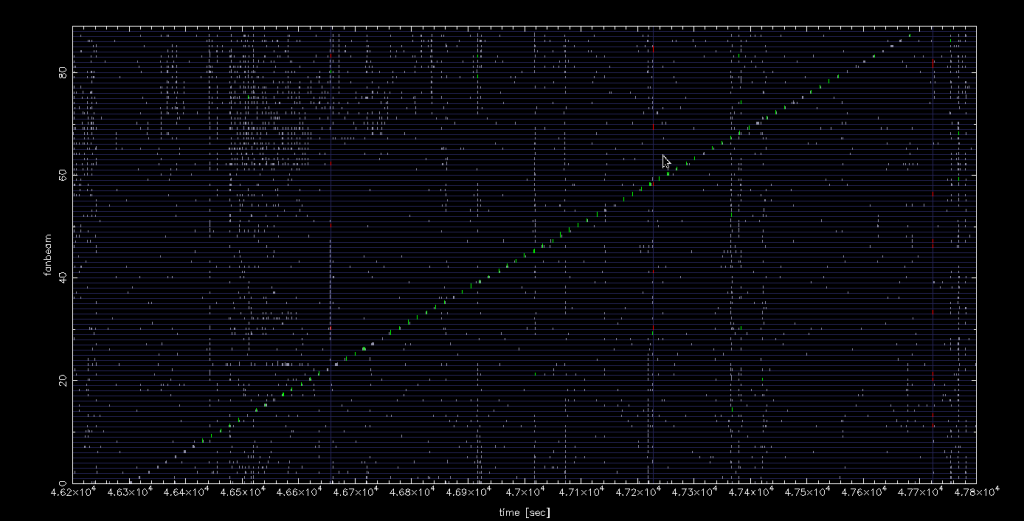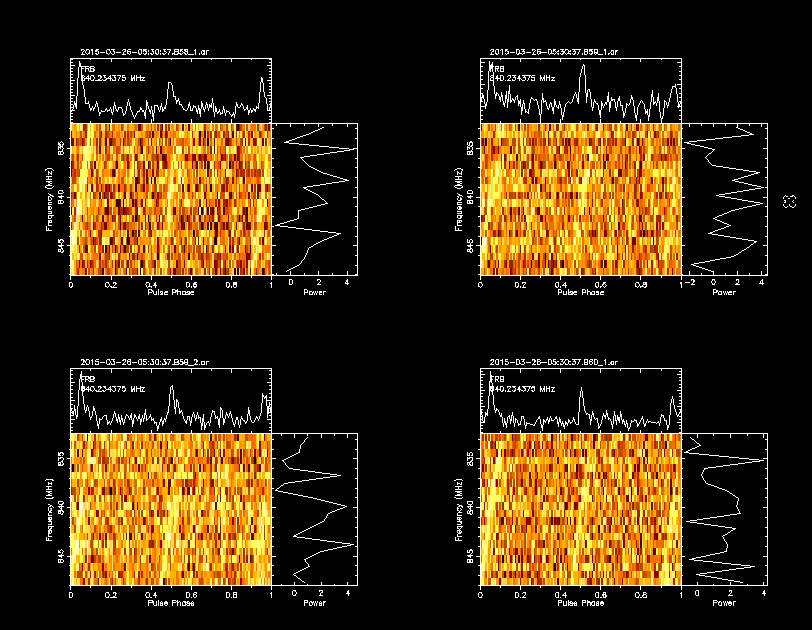27/Mar/2015 An important validator of our FRB search techniques is to test if we can see individual pulses from pulsars — as they are so similar to what FRBs will look like.
To date, our tests have been using the bright Southern pulsar Vela. On 26th March 2015, we set our FRB search running in a new record sky coverage of 88 fanbeams (or about 2 square degrees on the sky), and allowed a considerably dimmer pulsar, J1644-4559 to pass through the telescope’s field of view. This pulsar pulses about twice a second, has pulses about 10 ms wide, and a dispersion measure (DM) of about 500, and is thus likely to be typical of the FRBs we hope to see with UTMOST. It’s an excellent test of our FRB catching techniques.
J1644-4559 showed up beautifully. We detected over 80 individual pulses, with the brightest being at a S/N of about 18. The plot below of detections in different fanbeams as a function of time shows a clear trail of pulses (green) against very low level RFI (grey) and some brighter RFI seen in multiple fanbeams (red).
A selection of these detected pulses is shown below, over a “Pulse Phase” which corresponds to 1 second of time (J1644-4559 pulses about twice a second). The sweep of the delayed arrival time of the pulses as a function of frequency are caused by the ionised Interstellar Medium. FRBs are expected to have similar or greater sweeps of this type, indicative of passage through the Intergalactic Medium. J1644-4559 is thus an excellent test of our FRB sensitivity and entire data reduction pipeline.
UTMOST has now reached a full 2 square degrees of search area on the sky – already a quarter of the final area that will be searched — just a few weeks after our first FRB search which covered a mere 0.03 square degrees.
Image credits: Manisha Caleb and Chris Flynn


1 thought on “UTMOST’s FRB search techniques validated with the pulsar J1644-4559”
Comments are closed.